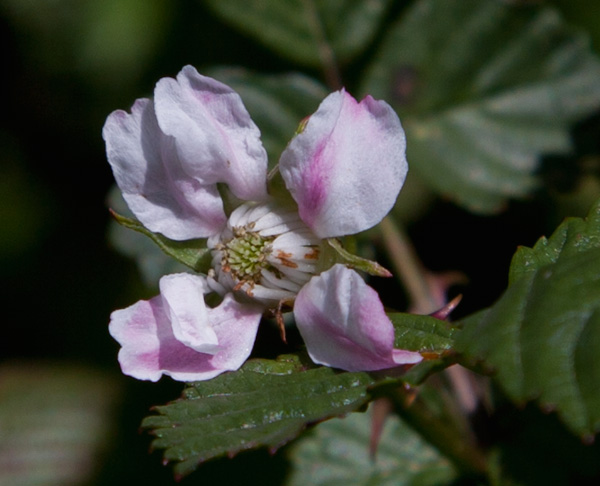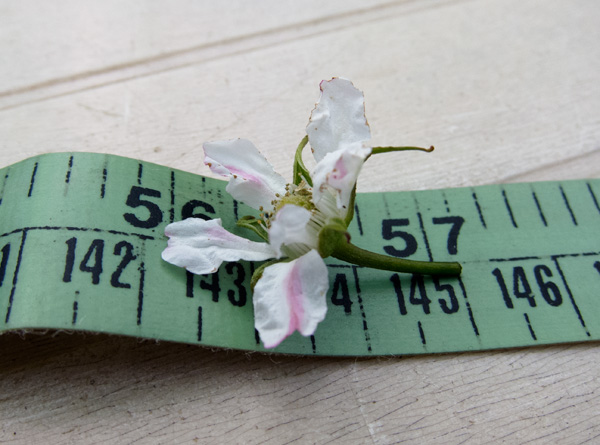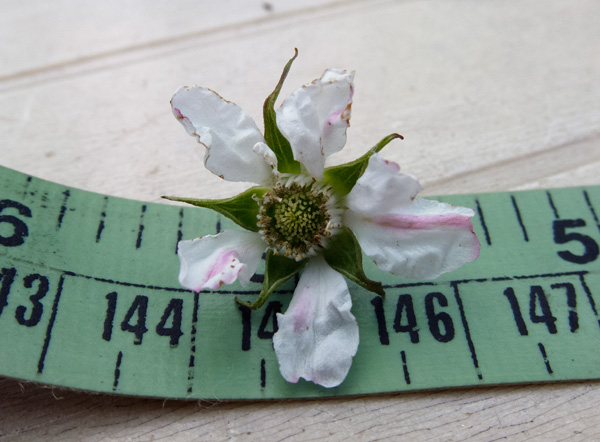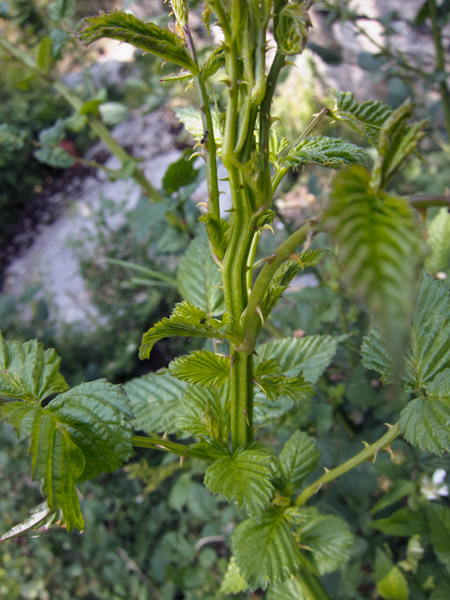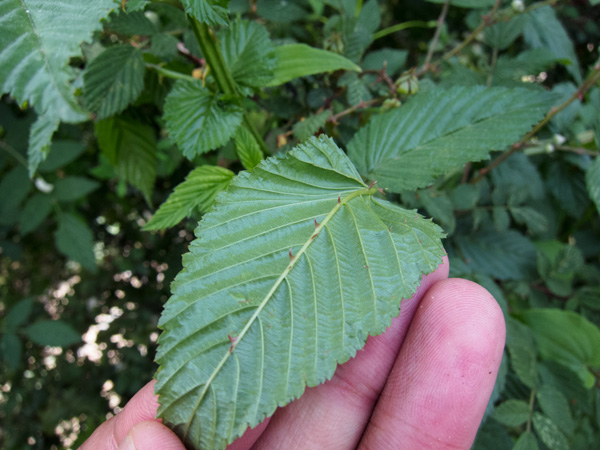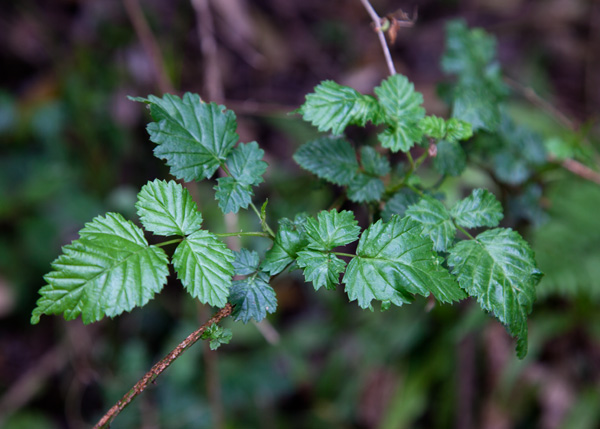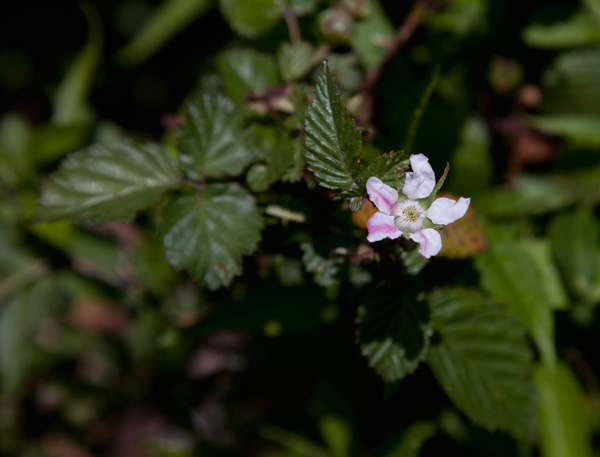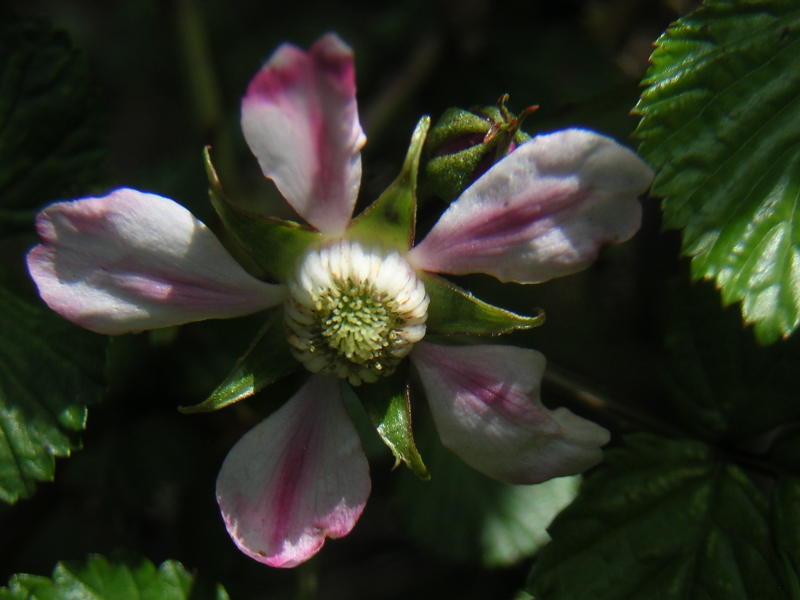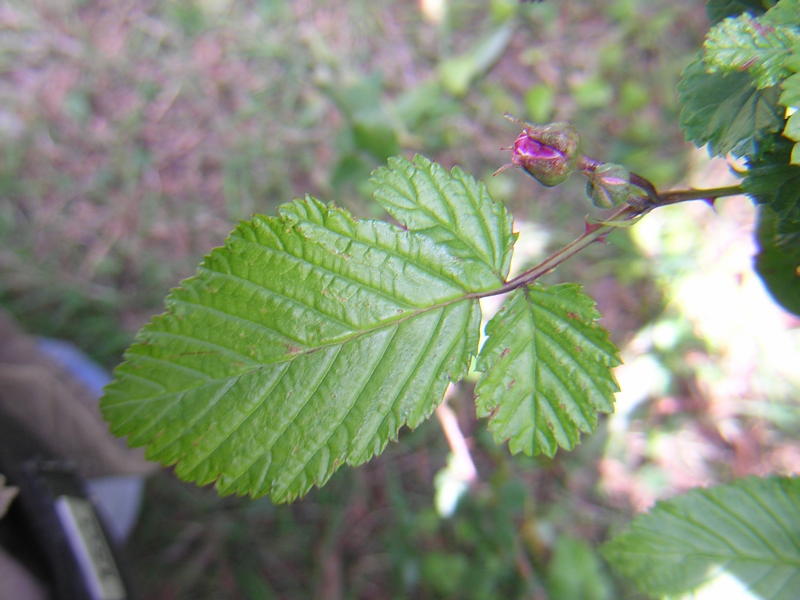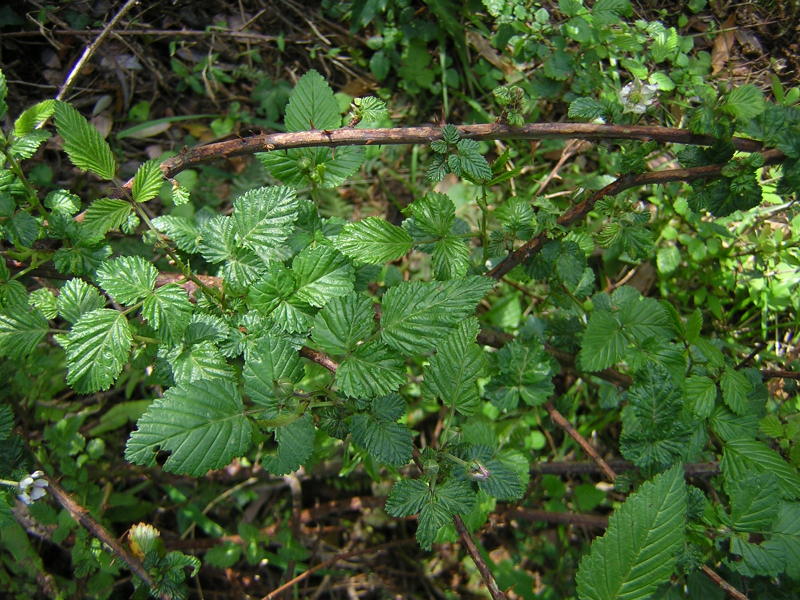|
Rubus hoffmeisterianus Kunth & C. D. Bouché, C. S. Kunth, Sp. nov. hort. berol. 14. 1848 (“1847”) (syn: Rubus niveus var. aitchisonii Hook. fil.);
Afghanistan (Kunar / Nuristan, Laghman, Parwan), Pakistan (Kurram, Chitral,
Swat), Jammu & Kashmir, N-India, Nepal as per Catalogue of Life; Common name: Hoffmeister Raspberry
I went for a walk in the mountains and stopping for tea at about 1850m found this shrub next to the teashop. I think this is Rubus mecilentus but am not certain. Please advise.
Rubus macilentus (Lean Raspberry)–Please confirm.
Above Mcleodganj, Dharamshala, HP
1850m approx.
3 May 2015
i want to wait for fruits and the under surface of leaves
I also photographed this Rubus about a week ago, flowering profusely in Dalhousie. Having seen this for the first time I was curious to note its large sized flowers (3-4 cm across; which can be guessed from your photographs also) with white petals reddish in the center to pure white and some even pink in colour, the leaves slightly wrinkled. I was yet to process these photographs but looking at the flower size it can’t be R. macilentus in which flowers are not more than 8 mm across (according to both FBI and Flora Simlensis). I will process my photographs only after Lamiaceae Fortnight. Agreed your plant matches with one depicted on Flowers of India but I am sure that is also wrongly identified. We can’t ignore 8 mm vs 30 mm or more flowers.
Thank you … I remember them being larger than 8mm. That rules out R. macilentus.
I will try and walk over there tomorrow and take a ruler along for measurement. I will also photograph the underneath of leaves as Ushadi suggested. It could be R. hypargyrus too reading the description in Oleg Polunin’s Flower of the Himalaya.
I look forward to your analysis with photographs from Dalhousie.
Looking at description in both Flora Simlensis and FBI it should be R. nutans Wall. now correctly names as R. barbatus Edgew.
This plant is described under R. nepalensis in Flowers of Himalayas, but according to the Plant List correct name is R. barbatus. Perhaps we will have to wait further, as R. barbatus/nepalensis is herbaceous plant without prickles. Ours is a cimbing shrub deistincly woody with prickles.
I think I got it finally R. hoffmeisterianus. I did go back last Saturday to examine the plant and here are some photos.
Please advise if we have R. hoffmeisterianus?
4 image.
Rubus id Kalatope al280411: A prickly climber/creeper flowering in April
Location Kalatope, Chamba
Altitude 2100 mts habit climber/creeper Habitat wild Height 1-2 mts Here is the key for genus Rubus from Flora Simlensis For your plant, the closest match is R. pedunculosus D. Don (syn: R. niveus Wall.; R. hypagyrus Edgew.) but be for look out for other closer species like R. hoffmeisterianus Kunth and Bouch (which is similar but upper leaflet largest and often 3-lobed, recurved prickles on rachis and young shoots); both have 3 leaflets, leaves white beneath, fruits orange to red and flowers pink. While hunting for Rubus, be on watch for: number of leaflets, palmate (arising from one point, like Ceiba) or pinnate (like rose), undersurface of leaf (get at least one photograph), prickles on stem and rachis/petiole, flower colour and diam, calyx lobes shape and length (do focus it) and colour of mature fruits. Luckily you will usually find all these on the same plant, some times late in the flowering season. Does R. pedunculosus also have recurved prickles on rachis? What is the difference between R. pedunculosus and R. hoffmeisterianus…?? One the terminal leaflet of hoffmeisterianus is much larger than others and often 3-lobed, not 3-lobed in R. pedunculosus
Calyx lobes of hoffmeisterianus are ovate and acute, in pedunculosus calyx lobes have long slender apices Leaflets are with blunt teeth in hoffmeisterianus, doubly sharply toothed in pedunculosus Leaves are densely white-wooly (matted wooly hairs) in hoffmeisterianus, white-hoary (white greyish white hairs) in pedunculosus To me appears more closer to images at Rubus hoffmeisterianus Kunth & C. D. Bouché, C. S. Kunth rather than those at Rubus pedunculosus
|
Rubus hoffmeisterianus
Updated on December 24, 2024

